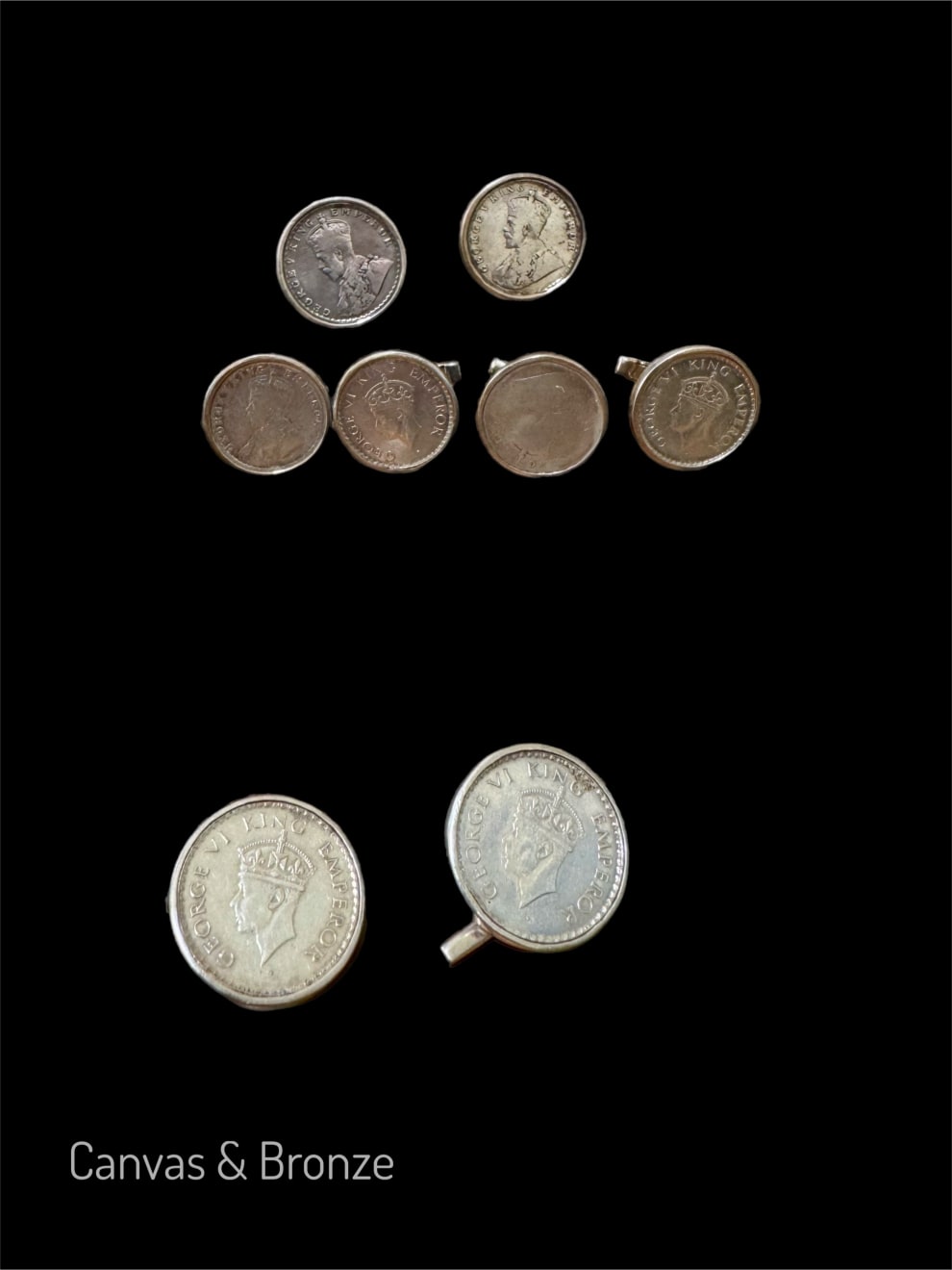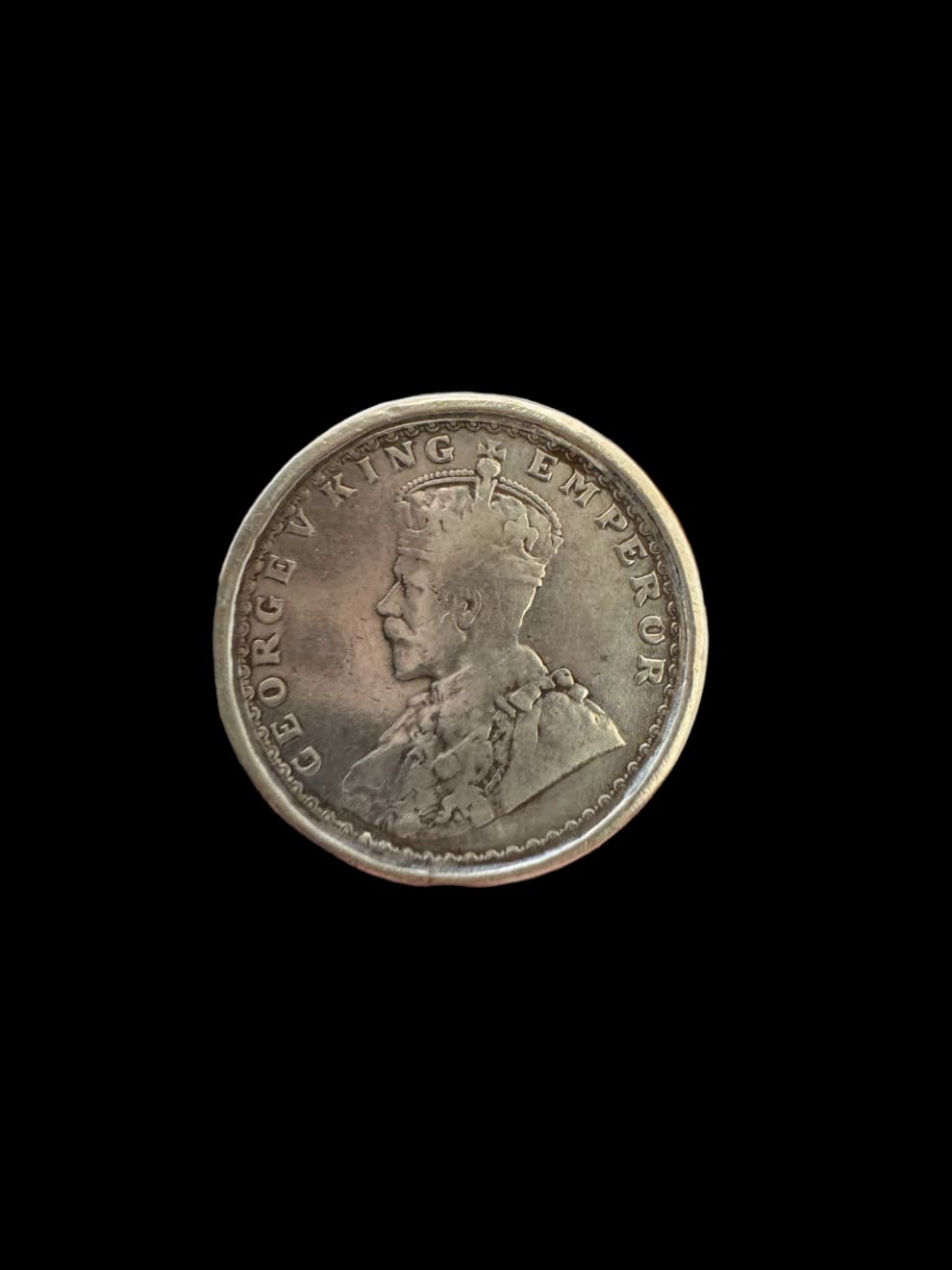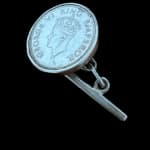Anonymous
4 Shirt Studs
2 Accessory Studs
Weight 64g
Further images
This British India King George V Silver Coins Cuff Links Set presents an elegant collection of eight silver accessories crafted from authentic British India coins featuring King George V. The collection includes two pairs of cufflinks, four shirt studs, and two accessory studs, all displaying the distinctive profile of King George V on their faces. The silver coins have developed a gentle patina that enhances their historical character while maintaining clear detail of the monarch's portrait and the "GEORGE V KING EMPEROR" inscription that encircles his image.
About Artwork: British India King George V Silver Coins Cuff Links Set
Dating from the early 1900s during King George V's reign (1910-1936), this eight-piece set transforms historical silver Half Rupee coins into functional men's accessories. Weighing a substantial 64 grams in total, these pieces were crafted from .917 silver coins originally minted in Calcutta or Bombay. The Half Rupee coins, approximately 24mm in diameter, provide an ideal size for cufflinks and studs, balancing visibility of the royal portrait with practical wearability. Beyond their aesthetic appeal, these accessories carry significant historical context from the British Raj period, representing a time when British India had established a uniform coinage system featuring the reigning monarch. The set exemplifies how historical artifacts can be repurposed into elegant personal adornments that connect the wearer to a specific era of colonial history while showcasing the craftsmanship of both the original minting and their conversion into fine jewelry pieces.
Key Features:
* Obverse (Front): The coin displays a left-facing profile of King George V wearing the Imperial Crown. The inscription around his portrait reads "GEORGE V KING EMPEROR".
* Reverse (Back): The reverse typically features the denomination "HALF RUPEE" along with "INDIA" and the year of minting. The design often includes a wreath surrounding the text.
* Material: These Half Rupee coins were generally made of silver with a purity of .917 (also known as sterling silver).
* Weight and Diameter: They typically weigh around 5.83 grams and have a diameter of approximately 24 mm.
* Mint Years: Coins of this type were minted throughout the reign of King George V in India, which lasted from 1910 to 1936.
* Mints: These coins were primarily minted at the Calcutta and Bombay mints. Mint marks, if present, can help identify the specific mint. A dot below the date usually indicates the Bombay mint.
Historical Context:
* British India Coinage: From 1835 to 1947, British India had a uniform coinage system featuring the reigning British monarch. Before 1835, the three presidencies (Bengal, Bombay, and Madras) issued their own coins.
* George V's Reign (1910-1936): The coinage during George V's reign saw various denominations in gold, silver, and copper, later including base metals due to the rising price of silver during World War I. The Half Rupee was a significant silver denomination used for everyday transactions.
* Denominations during George V's time included:
* Silver: Rupee, Half Rupee, Quarter Rupee, Two Annas.
* Copper/Bronze: 1/12 Anna (One Pie), 1/2 Pice, 1/4 Anna (One Pice), One Anna.
* Cupro-Nickel: Introduced later, including denominations like 8 Annas and 4 Annas (though these were not always popular or continuously issued).
Significance for Collectors:
* British India coins, especially those featuring King George V, are popular among numismatists due to their historical significance, the precious metal content (for silver coins), and the variety of dates and mint marks.
* The value of a specific Half Rupee coin depends on its year of minting, mint mark, condition, and rarity. Certain years or mint marks might be more challenging to find, increasing their value.
* The "Pig Rupee" variety from 1911 is particularly famous. On these early issues, the small elephant on the King's robe was thought to resemble a pig, making them a sought-after collectible. This design was later modified.





